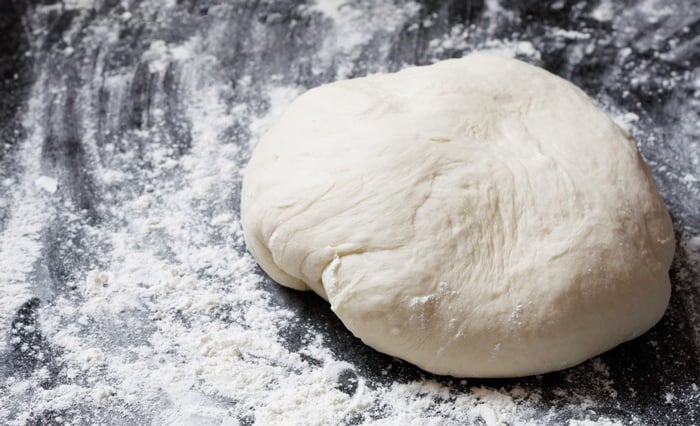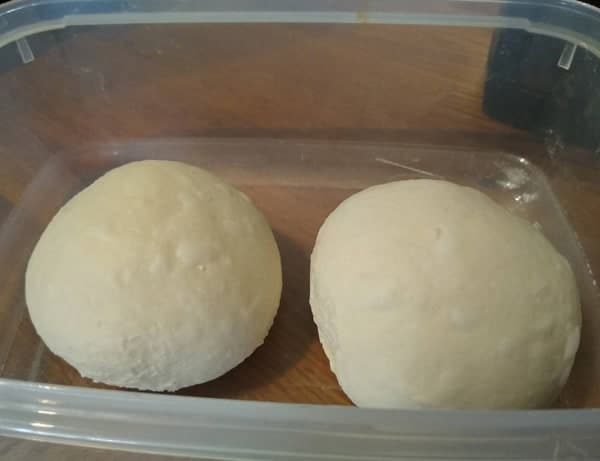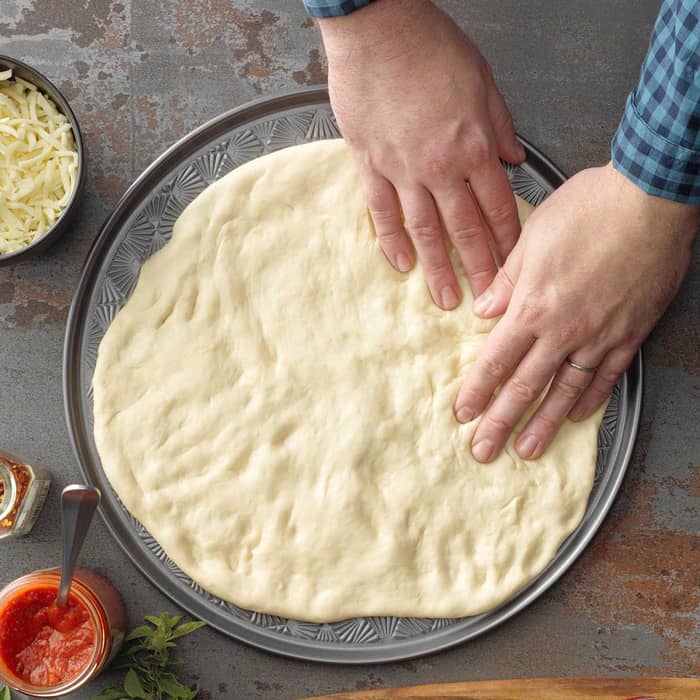Sometimes it so happens that you knead the dough and forget about it. Keeping it in your fridge for days makes you think that the dough has gone bad and is no longer usable. But there are a few significant signs that actually help decide when to throw the bad dough out.
It is because yeast present in the dough can only ferment it up to a certain level and can not work any further to raise it. When that dough is cooked, it becomes hard and flattened instead of being fluffy and risen up properly. Then normally, you say that dough has gone bad.
But actually, the dough does not get bad too easily. There are a few signs to look for to make sure that you should throw the dough out. When you remove the mixture from the refrigerator and its surface is decreased, or it is an outstandingly dry inclination, with a hard appearance, it’s most likely over the hill. Put it in the canister.
Pizza dough with a dim tone, instead of a new white or beige one, or mixture that has specks of dark, is likewise likely ruined. A pizza mixture that has been put away in the cooler and has indications of cooler consumption, like whitish spots or noticeable cooler precious stones, is additionally no acceptable. While eating batter with cooler consumption won’t make you debilitated, it isn’t too delicious, and the mixture may not cook accurately.
Water
The water used for kneading dough is very important, but most of us never pay attention to it at all. The water of some areas is rich in iron. It gets accumulated in the flour and impairs the yeast fermentation activity. So, it needs to be tested and filtered.
The hardness of water is another big issue. Hard water makes a harder dough, whereas soft water makes a softer dough. If water is pre-heated, it somewhat becomes soft. Water temperature is another major determining factor of the pizza dough. Tap water is generally prescribed for making dough, but there is a difference in the temperature of tap water in many areas.

The temperature of tap water also differs with seasons. To resolve this issue, it is advisable to use mineral water or low saltwater and pre-heating it if required. If you provide your dough with the proper fermentation settings, it will rise perfectly.
Temperature
The temperature you provide is also a determining factor for the proper fermentation of your dough. If the temperature is too low, the yeast will not get the proper medium for fermentation, and the dough would not rise.
Contrastingly, if the temperature is too high, the yeast would get suffocated, and the dough would appear rotten and smelly. An alcoholic smell arises from it due to the presence of carbon dioxide and ethanol gases.

The pH level of water is also a factor that affects directly dough fermentation. Yeast is highly sensitive to Ph level, and its activity is diminished if provided with a high level of Ph. The Sulphur and Carbon present in water increases its acidity, and even though the water is filtered, it remains alkaline.
How to fix a bad dough?
Sometimes the dough is rotten, and nothing could be done about it. So, it is better if you throw it in a bin. Sometimes a dough becomes dry. It does not expand properly and is hard to manage. Its treatment is really simple. It can easily be treated using water and minute quantities of oil along with it.

Kneading is a simple solution that solves big problems. Air bubbles created on the surface of dough can cause issues for the yeast suffocating it, and the malfunctioning of yeast will lead to a bad dough. So, while you keep the dough for fermentation, knead it for seven to ten minutes so that all the air bubbles will be removed and the dough would rise double times the original.
Sometimes the dough is ripped when you try to expand it. It means that your dough still needs some time for fermentation. You should place the dough in a pizza pan for some time covering it and allowing some more time for the dough to rise. Dry flour can also be used for the rescue.

